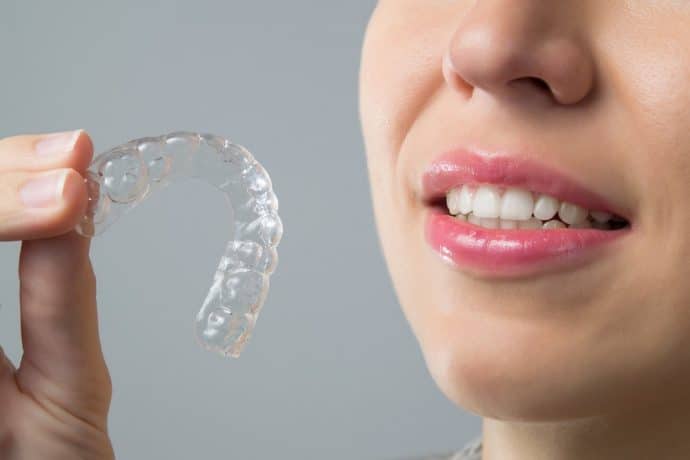There used only to be one option for orthodontic care – traditional metal braces. Invisalign is not a new technique, but it is seeing a surge in popularity, especially for adults. Unlike traditional braces, Invisalign trays are completely see-through, which makes them attractive. But unfortunately, they might not be for everyone and the best course to fix every problem.
Invisalign uses plastic see-through trays to slightly move your teeth into alignment over time. The trays place force on the teeth to move them into the right placement. Although there’s a common misperception that they aren’t appropriate or as effective for kids as traditional orthodontic treatment, they are highly effective for children and adults. If you are wondering which is right for you or your child, the only real difference between Invisalign and braces is the orthodontic experience of the patient.
Removable
One of the biggest advantages of the Invisalign system is that the trays can be removed when you want to floss, brush, or eat. But although this is clearly an advantage for adults, for children it has the potential to become a compliance issue. If your child doesn’t put the trays back in or continues to remove them all the time, it can prolong their treatment period. For adults who are highly motivated to fix their teeth and are responsible enough, Invisalign has a clear advantage over traditional fixed and stationary braces.
Clear
Invisalign is a clear system that people can’t notice unless they are very close to you. Even then, most won’t ever detect them. Unlike having a mouth full of metal, the trays are almost completely invisible. Braces do come in a clear version, but the wires that run through them are still noticeable, and they jut out past the teeth. So even if you use clear braces, they tend to yellow, and they are still highly visible, unlike the Invisalign system.
Comfort
Braces are extremely abrasive and brush up against the cheek. Most patients who choose Invisalign don’t have as many complaints about the trays being uncomfortable or causing pain. Since they don’t have parts that stick out, there isn’t a need for wax to cover them like braces, and there is far less potential scarring to the interior of the mouth.
Convenience
The Invisalign system is also becoming more and more convenient. Although an initial evaluation is required, there are new Winnipeg orthodontics centers that will send you trays via the internet to reduce the number of times you have to go into an office to have your braces adjusted. That means less time sitting and waiting in a dentist office and chair. If you choose the online route, it is often less expensive as well. Since you aren’t billed for all those dentist’s hours, the trays aren’t expensive to make, and the savings are passed down to you as the consumer. Having them shipped to you is much more convenient than having to go in to have your braces adjusted once a month.
Length of treatment time
The length of time that people need braces and orthodontic care has been decreased significantly over the past several decades. What used to take years is now taking months, and the methods are only continuing to improve. Most Invisalign patients who don’t require massive reorganizing need only wear their Invisalign trays for about three to six months, which is much shorter than the time needed for traditional braces.
So which is right for you? The clear advantages for adults are evident with Invisalign. If you don’t want to show a “brace-face” to the world and would rather order your trays online than having to sit in an office once a month, then Invisalign is a no-brainer. However, if you have a child who isn’t very responsible, you don’t want to continually nag them about wearing their trays; to make sure that their time in orthodontic care isn’t forever, then braces might be your preference.
Which is the right option for you depends on what you are willing to commit to and what your priorities are. Although just as effective for children and teens, sometimes traditional braces – which are permanent – means that they stay put without parents continually having to remind their children of one more thing to be responsible for.

